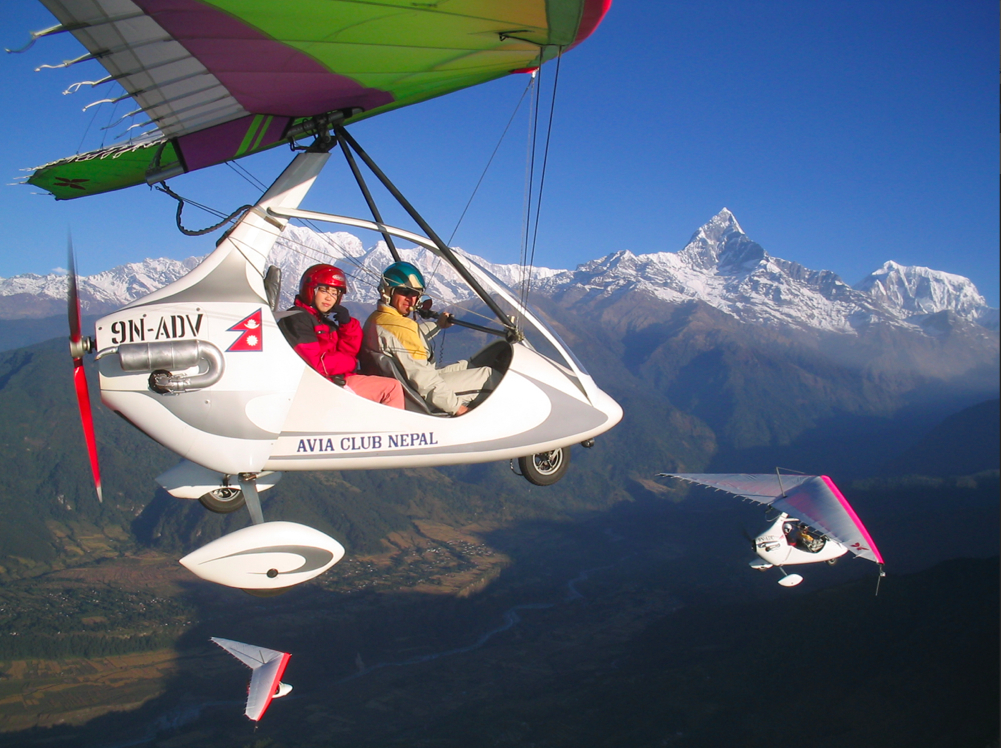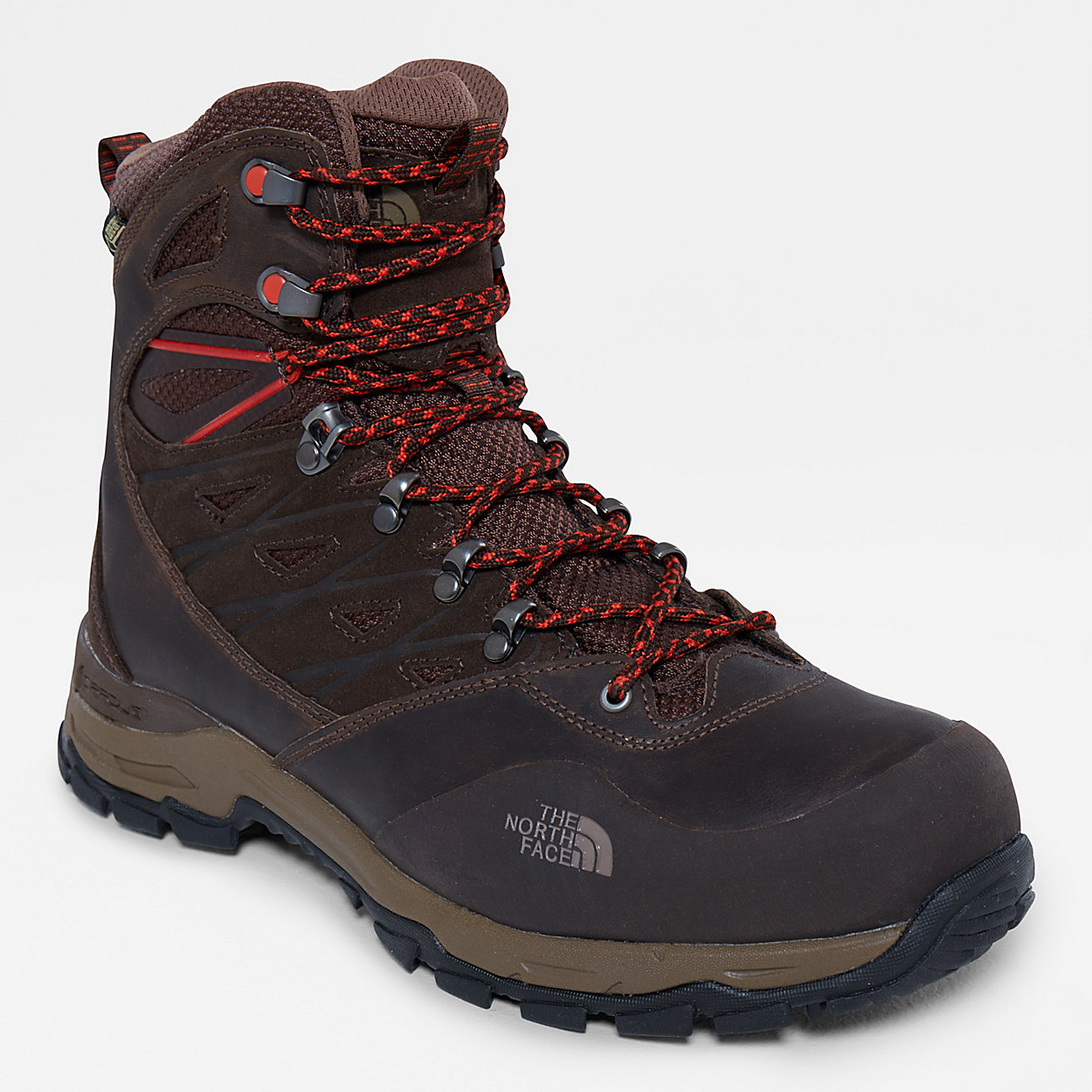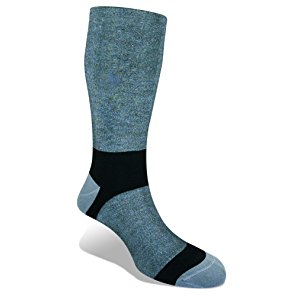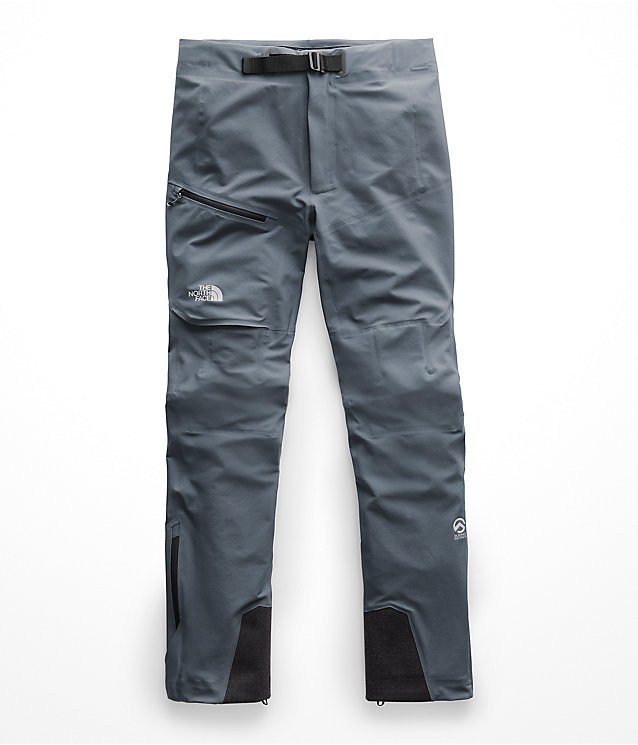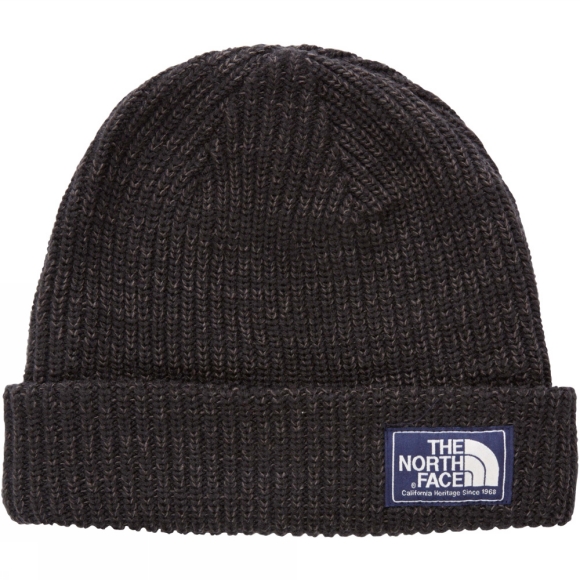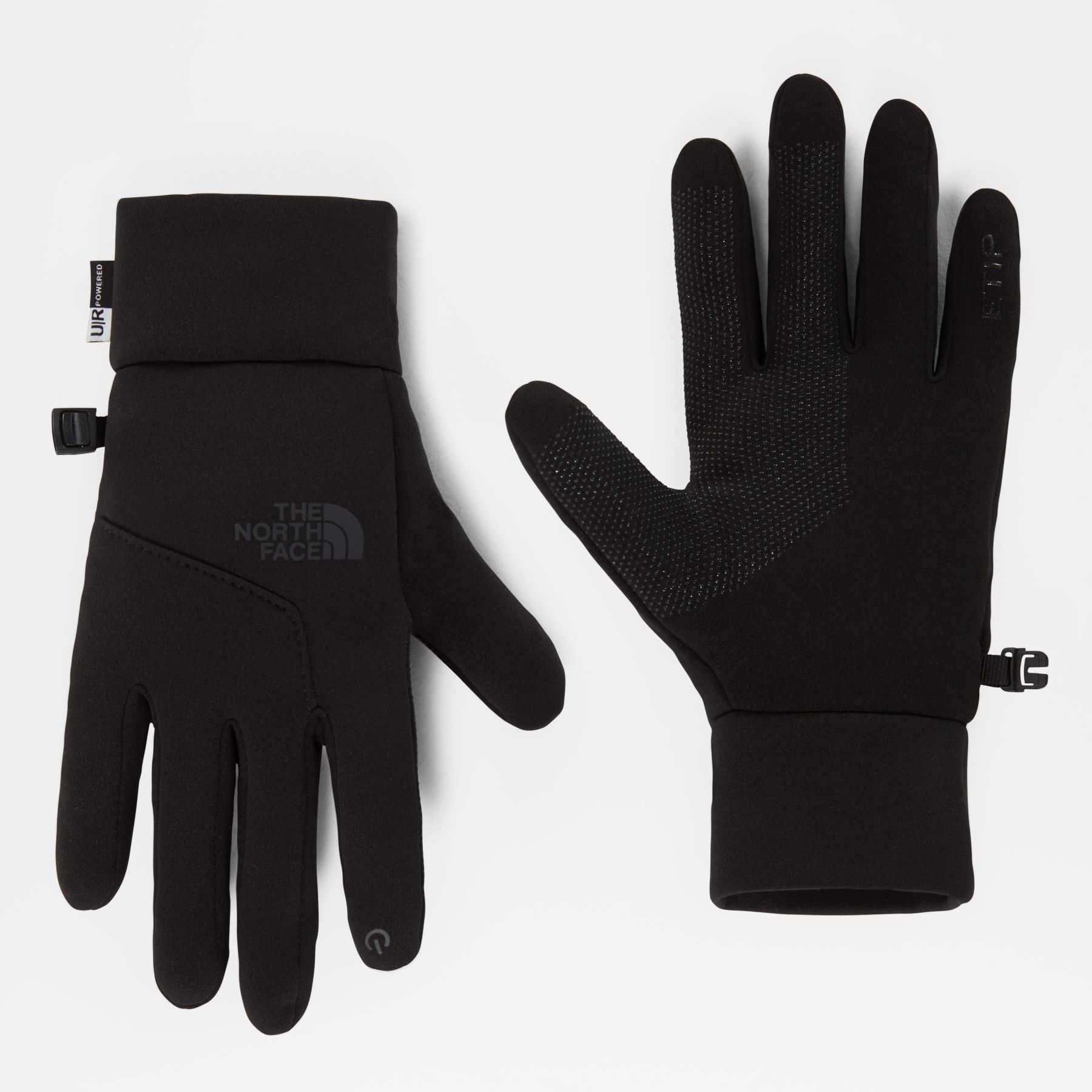Things to do In Pokhara
Heaven on Earth, City of Pokhara
Pokhara is a remarkable place of natural beauty. Situated at an altitude of 827m from the sea level and 200km west of Kathmandu valley, the city is known as a center of adventure. This enchanting city has several beautiful lakes and offers stunning panaromic views of Himalayan peaks. The serenity of lakes and the magnificence of the Himalayas rising behind them create an ambience of peace and magic. So today the city has not only become the starting point for most popular trekking and rafting destinations but also a place to relax and enjoy the beauty of nature.
Pokhara is part of a once vibrant trade route extending between India and Tibet. To this day, mule trains can be seen camped on the outskirts of the town, bringing goods to trade from remote regions of the Himalaya. This is the land of Gurungs and Magars, hardworking farmers and valorous warriors who have earned worldwide fame as Gurkha soldiers. The Thakalis, another important ethnic group here, are known for their entrepreneurship.
Getting here
Domestic Flights - 30 - 45 Min flight time from Kathmandu domestic airport.
Ground Transport - 6 hours of scenic ride by passing smaller busy towns. There’s a good chance you might be stuck at a traffic in Thankot just before passing the hills of Kathmandu. It might be 4-5 hours our waiting time.
Phewa lake
Phewa lake, the second largest lake in the kingdom, roughly measuring 1.5 km by 4 km, is the center of all attractions in Pokhara. The enchanting lake is an idyllic playground. Brightly painted wooden boats and sailboats can be rented on reasonable cost around lakeside.
The lake is neither deep (roughly 47 meters at most) nor particulary clean, but the water is warm and swimming is pleasant if you don't think about the probable pollution.
The eastern shoreline of the lake, popularly known as Lakeside or Baidam, consists of seemingly endless strip of lodges, restaurants, bookshops and souvenir shops. One of the fascinating parts of lakeside is the splendid view of the mountains, especially when the still water reflects the peaks, creating a double image.
Paragliding, Zip wire and Bungee Jumping
Several paragliding operators can be found in Lakeside. The rates is USD 120 maximum for foreigner, USD 90 maximum for Indian national and USD 70 maximum for Nepalese during the season time. During off season it could go down to 60 USD for foreigners.
Highground adventure operates zipwire and bungee. Combo price $120.
Avia Ultra Flights
It is a unique type of mountain flight experience only found in Pokhara. Prices are details can be found in the Avia club’s website. More infos in: https://aviaclubnepal.com/
Hot air Balloon ride
Hot air balloon services resumed again from 2018 with sole operator Balloon Nepal currently in Pokhara only. Price rates ranges from USD $90 thetered flights, free flight for 30 minutes USD $120 and Magical Voyage experience, 1 hour flight USD $160.
NightLife and Entertainment
Lakeside is famous for its tourist lifestyle. Pokhara is very welcoming to touristic lifestyle and live band performances are usually open until late 2 - 3 am in the night especially for tourist. Great food and great people. Lakeside holds range of hotels, restaurants, bars, music live band venues and clubs. Places recommended Busy bee, Altitude restaurant, Irish Bar and many more can be found on the street of Lakeside.
Food and Culture
Pokhara shares distinctly different food than Kathmandu. Pokharalies as the local define themselves have almost similar yet different food and culture than the capital. Which makes it unique on its own way. Pokhara offers various types of foods. Wester, Asian, and Nepalese.
Short Trek trips to Near villages from Pokhara City
Most of the Annapurna region trek begins from Pokhara but if you would like 2-3 tailored trips we can recommend various trip packages. i.e. Mardi Himal trek and Poon Hill trek is the most famous taking you closer to the mountains and other 1 day treks such as Dhampus or Lwang 1 day trek.
Other attraction in Pokhara - David's fall, Bat Cave, Villages, Power House, Pokhara Museum, Sarangkot for Pokhara View and World Peace Pagoda and many more.
15 Important things to know about Everest Base Camp
15 IMPORTANT THINGS TO KNOW ABOUT
EVEREST BASE CAMP
Everest Base Camp 5340M
Climbing Everest Base Camp has been an iconic destination for many adventure travelers. I have had the luxury of traveling to Everest base camp since it was on my dream adventure list before heading into higher mountains. Through my experience of trekking solo and other times guiding with fellow Sherpa leaders, I want to share some valuable tips that will make your trip easier.
Tips are in no particular order, they are just written down as I learned them through my experience.
1. Bring cash USD and Rupees
If you have booked your tour with a travel/tour agencies then all your necessary expenses are covered. But you would want to bring in extra cash just in case you want to buy anything that is not included in your package (ie alcohol, chocolate, or energy bars). If you are traveling solo then Nepalese rupees is a must, I would recommend around (Rs 1 Lakh 50 thousand or $1500). You want to make sure you have enough cash to tip your guides and porters and for any unplanned events.
2. Get insurance
Buying normal travel insurance and travel insurance for Everest base camp is hugely different. You will be standing at 5,644.5 m (18,519 ft) above sea level and on top of that, you are traveling to one of the most remote and rugged regions on Earth. There is no vehicle roads there so the only option is helicopter evacuation or the other option is a painful Dzo/mule ride down the terrains. High altitude-related illness, accidents, diarrhea, cough, and natural disasters like avalanches and rockfalls, are expected while trekking in Everest Base Camp. My best suggestion is to get the travel insurance that covers helicopter evacuation, repatriation, and independent trekking (if you are going solo) up to 6000 m (18,510 ft) and higher if you are doing side trips to Mt Lobuche, Mera, or Island Peak. It is very important to spend some time going over terms and conditions that could ease the process should you need to claim it back.
3. Flight to Lukla and buffer days ( Very important )
Weather conditions in the Himalayas can change rapidly and aviation schedules are not as reliable as you might expect. The flight between Kathmandu and Lukla where the Everest Base Camp trek starts is frequently delayed and maybe canceled for the day or several days in succession. In the event your flight is canceled you will need to either rebook your flight for the following day or attempt to get you on a chartered helicopter. You are responsible for the extra costs of helicopter flights which might be $250 - $400 per person or more. If you end up taking a helicopter instead of your flight you can ask for a refund of $150 of the flight fare. A similar case applies when you want to return from Lukla to Kathmandu. If you have booked your trip with travel/tour agencies like ours then the reps from the company should give you these options and take care of the refund amounts.
This happened to me when I was at Lukla, waiting for my flights back to Kathmandu. Flights were canceled due to poor weather. Some people were stuck in Lukla for 2 days waiting with no way out. If they had to fly the next day home, they would have missed their flight. So we chartered the helicopter to get back to Kathmandu.
Best seat - Sit at either the front or back of the plane on the left-hand side when flying to Lukla for best views. The Himalayas are on the left and the front and back are not obscured by the wings of the plane. Sit here for your first glimpse of Mount Everest before your trek. It will help to build excitement and the view is awe-inspiring.
4. Buy the right gear. ( Do not compromise on quality gears)
I highly suggest you buy the right clothing and gear before coming to Nepal. But even if you forget or wish you do not want to carry all those loads all the way then everything you could possibly need to climb to Everest Base Camp is available in Nepal. If you need it or forgot it, you can get it in Kathmandu. Check out our gear checklist blog.
5. Filtered water bottle
I cannot stress enough the importance of a filtered water bottle when coming to Nepal. You do not want to be buying plastic water bottles every time so instead, use bottles like (Life-straw or similar brands) which I find it is a lifesaver where ever I go in Nepal. Save the environment by not using plastic bottles and save money by using water from natural sources.
6. Pack a map and books to read
You will want to reference regularly, check altitude symptoms, illnesses, your route, and what to expect. Trekking to base camp takes several days and it can get a little boring at times. You may only have the energy to lay in bed and read a book, so bring a good one. You can buy books in Kathmandu and at Namche Bazaar.
7. Hand-wipes and sanitizer.
Showering is really not recommended in high altitude cold temperatures. You won't be showering much. Nobody does on Everest after their fifth day of the trek or until their 11th day. Showers are not very appealing at -10 degrees Celcius and you won’t be getting proper shower facilities after Namche Bazaar. Hand wipes and hand sanitizer are lifesavers, keeps you clean and smelling fresh.
8. Give ways to Yaks and Sherpa's at all times and traffic on trails
When trekking a yak train comes, move to the mountainside to get out of the way. You don't want to be nudged off a cliff by a yak or get hit by one. Sherpa's and porters work hard on the Everest trail, they are constantly taking supplies up and down the mountain. Help make their life easier by staying out of their way.
Everest trail is one of the most famous trails in Nepal and during the peak season the region welcomes around 15 - 20 thousand travelers. So you should expect a bit of traffic and don’t be surprised by so many travelers. The busiest month is April as it is the only time for mountain expeditions so a lot of mountain climbers will be heading up the route and October is another busiest month. So, if you want to avoid traffic plan your trek around early March, September, or towards November and December.
9. Keep batteries close to your body.
Sleep with them in your sleeping bags. Charging batteries is very expensive per hour (almost $5 per hour) The cold drains batteries quickly, extends their life by keeping them warm. Charges for batteries near or below Namche Bazaar 100-150 NPR/hour – Closer to Base Camp 300 NPR/hour
10. Everest viewpoints
Mount Everest, Nuptse, Ama Dablam seen in background
Everest is only visible from a few points during the Everest Base Camp trek. On your acclimatization day at Namche make sure you take the acclimatization hike to Everest view point hotel for an amazing panoramic view of Everest and other Himalayan ranges. Tengboche is another site from where the tip of Everest will be visible and the finally the mighty walk to Kalapatthar where the long stretch of Everest and Himalayas are right in front of you. Hike early and take your photos in the early hours for your memories to last forever.
11. Rewards yourself give yourself a few days after the trek before you have to fly home.
After you have walked all that way, you might as well encourage and reward yourself. After my Everest Base Camp trek, I stayed in a beautiful, cozy Dwarikas Resort in Dhulikhel with a hot shower, super comfy bed, massage, and a moment to myself. It added a sense of fulfillment, happy energy, excitement to see more, reflect, and added encouragement to explore higher mountains. I feel it is important to encourage and motivate yourself to do the things you want to do and once you accomplish it, reward and enjoy yourself. The entire journey of the Everest base camp trail is an experience in itself. There is something to admire about every turn. The regions monasteries, cultivated fields, grazing yaks, hot momos, Dal Bhat overlooking stunning mountains, the experience of trekking the rugged terrains with giant mountains, the view from Everest Base Camp, Kala Patthar, smiles of the locals, to fellow trekkers. Slow down every now and again to look around and take in the giant mountains, gorge, river, shops, homes, and life that all happens right along the path. There is nowhere else in the world like it.
12. Respect local culture
During trekking, you are exposed to new cultures and traditions. A lot of the way of doing things won’t be your way of doing so go with an open mind. When trekking Prayer rocks, walls and flags are meant to be kept to the right at all times. Also, ask before taking any photographs, many people do not want their photos taken.
13. Back to basics
I would highly suggest not to rely on WIFI or internet connections. Firstly wifi connection is very slow after Tengboche and expensive. 500 MB costs Rs 500 ($5) which to my experience is just not worth it. The other thing to keep in mind is that charging your phone will also cost you and the prices increases, the higher you go the higher the prices. So, staying out of touch with the post of the world and just living the experiences and not worrying about anything would be the best way to enjoy the trek. You may have the urge to share everything in that moment but this is the perfect moment to be in nature and allow yourself a digital detox, which is healthy for your mind and body.
14. Physically demanding than you think.
The terrains of the Everest region is raw and rugged. Reaching the lap of Mount Everest, the highest peak on Earth, is not easy but definitely doable with the right training preparations and will. Read our blog post on training for trekking in Nepal. It isn't recommended if you have knee problems or weak ankles because of steep ascents and descents, rocky paths, a lot of rock steps, and some moraine walking. Plus, people carrying significant extra weight are likely to struggle with this trek at altitude.
15. Prepare for altitude sickness.
Make sure you take the acclimatization rest day and the acclimatization hike day. There are fewer ways to prepare yourself for high altitude, so the rest days in your itineraries are a must. Please read our blog post on altitude sickness.
I hope the pointer listed above will help you when preparing for your Everest base camp trek. You have made one of the best decisions and you will not be disappointed, that I can promise. Stay healthy and fit. Enjoy your adventure and take lots of pictures. This will be a memory for a lifetime. Who knows you might be inspired to go higher and go on other challenging adventures.
If you do have any more questions, please ask us below in the comment section or you can email us at bookings@namasadventure.com and our team will get back to you as soon as they can.
Stay well. Challenge yourself. Dare great things and live your story.
Trekking in Nepal gear list
You have plans to go trekking in Nepal and wondering what are the right gears to pack for the rugged terrains in the Himalayas. Packing the right gear is crucial to successfully completing your adventures in high altitude landscapes of Nepal. We have listed some of the necessary gears to take on any trekking you undertake in the mountains. Trekking such as Everest base camp, Upper Mustang, Annapurna circuit or even short ones like Mardi Himal trek or Poon hill trek requires the right gears.
Trekking Equipment checklist
Footwears
* Hiking shoes for the trek to base camp with ankle protection
* Gaiters
* Midweight thermal socks: 5 pairs
* Liner socks or equivalent: 2 pairs
Body Layers
* 1 merino base layers: top / bottom set
* Quick-dry sports bra (for women)
* 1 mid layer top: breathable Underwear
* Lightweight waterproof/breathable rain pants
* Convertible hiking pants
* Hooded Soft Shell jacket To be worn over other layers
* Midweight down or synthetic parka with hood
* Hooded Hard Shell: Gore Tex and breathable
* Insulated Down Jacket
* Long jones equivalent to Rab’s Polartec or equivalent: 2 pairs
Headgear and Hand wear:
* Wool hat (ski hat)
* Sunhat: To shade your face / neck from the sun on a hot day
* Buff: To protect your neck / face from the sun
* Under helmet Balaclava
* Glacier glasses: Full protection with side covers or wrap around
* Lightweight synthetic liner gloves: For wearing on a hot day; 2 pairs
* Soft shell gloves: To wear for moderate cold / wind
* Expedition Mitts for bad weather
Personal Gear:
* 20-30L Trekking Backpack: To carry on the trek to base camp. Simple and light.
* Sleeping Bag: Rated to at least -10 to -20C. Goose down or synthetic
* Compression stuff sacks: 2 large ones; for reducing volume of the sleeping bag, down parka, etc., in your pack.
* Trekking poles with snow baskets: Adjustable poles
* Head torch: 1 normal for base camp and 1 with remote battery systems for climbing at night. This will be used whilst climbing at night
* Sunscreen: SPF 50 or above
* Lip balm with sunblock
* Water bottles: 1 wide mouth bottles with 1L capacity
* Thermos: 1 litre (buy a good ones to keep your water warm for longer hours)
* Toiletry bag: Include toilet paper and hand sanitiser and small towel
* Hand warmers & toe warmers
* Pen Knife or multi tool (optional)
* Camera: bring extra batteries and memory cards
* Personal solar charging system (optional but recommended)
* Travel Clothes
Duffel bags (1) with locks
* Base Camp extra Items: Kindle, I pad, books, smart phone, etc
Cell phone in waterproof case
Cell phone charging cable
Local SIM card for cell phone (purchase in Nepal)
Portable power device (for recharging phone or other electronics)
* Snack food: Please bring a few days of your favourite climbing snack food such as bars, energy gels, nuts, beef jerky, etc. A variety of salty and sweet is recommended to give you extra energy.
* Small personal first aid kit: Include athletic tape, Band-Aid’s, Ibuprofen, blister care, personal medications, etc
Toothbrush (travel size)
Toothpaste (travel size)
Toilet paper
Personal wipes
Women’s hygiene items
Pee bottle
Hand sanitizer
Shampoo and conditioner
Biodegradable soap
Deodorant
Dental floss
Razor and shaving cream
Skin lotion
* Medications and Prescriptions: Bring antibiotics (Azithromycin, etc.), and altitude medicine such as Diamox and dexamethasone*
Companies recommended
Trekking Boots - La Sportiva, Northface, Patagonia, Mammut
Body Layers - Northface, Mountain hardware, Mammut, Patagonia, Arctyrex, Marmot, Rab
Headgear and hand wear - Northface, Mountain hardware, Patagonia, Mammut
Glasses - Julbo
Other gear companies: Exped, Garmin, Goal zero, Bio lite, MSR Gears
P.s- You can hire a lot of these items in Kathmandu (Thamel), if you do not wish to buy them.
10 Health, Mental and Physical benefits of outdoor adventure travel
10 HEALTH, MENTAL AND PHYSICAL BENEFITS OF OUTDOOR ADVENTURE TRAVEL
Photo by- Jamie Mc Guiness / Flickr
Seeing the beauty of Nepal is enough to keep you alive, your soul resuscitates and vibrates to the theme of the beauty of Nepal, think about trekking the Himalayan terrains to Paragliding in Pokhara, Yoga rafting in the Sunkoshi river, or how about enduro motocross or mountain biking in Upper Mustang. This is one of the best things that can ever happen to anyone. Life is beautiful when we know how to enjoy it. Recent studies have shown that a merry heart does more good than medicine. In the puzzle of this age, young people are finding it difficult to enjoy the true beauty of living, they are so engrossed in making a lot of money which is not bad in itself but living truly is examining the true beauty of your world.
What is outdoor adventure travel?
This is making the best moment of time by exploring new places, checking for what is not missing, and having a wonderful time digging out the true beauty of nature. For reference, we want to use Nepal as an outdoor adventure destination. I might sound bias but if you have done outdoor adventure travel somewhere else except Nepal or Peru, am sorry to say you are missing out on some of the world's greatest adventures. If you haven't visited Nepal and maybe while growing up you never had enough resources to visit astonishing places like Nepal, now that you're a young adult you should visit these amazing places. If you are around age 45 - 54, you would still have enough strength to explore.
Remember in as much as adventure travel is quite fun, it would require you to leave your comfort zone and might exercise you a little bit, but if you're fun-loving, you'd be happy you went for one. Before I go into the benefits of outdoor adventure travel, let me quickly take you by hand into the beauty of Nepal, if you stay outside Nepal and you're ever looking for a place to have your outdoor adventure travel, after reading this, I bet you'd be convinced to try Nepal.
1) Trekking in Nepal
Have you ever thought of walking on the toughest terrain before, the true beauty of Nature is seen when you walk and climb the terrains and you flex muscles like never before, feel the mild intensity of the weather and the cool breeze flowing? There is no beauty as such anywhere in the world. What better exercise can keep the brain and muscles alive, to keep them functioning in their best form.
2) Go for Paramotoring
Have you ever thought of flying like a bird, it takes away your fears and allows you to feel what it is to conquer the sky, it broadens your horizon and gives you one of the most beautiful sights of Pokhara and nearby hills.
3) Mountain Biking in Nepal
Mountain biking in Nepal will provide the golden opportunity to the visitors to enjoy the great natural view of the high hills along with the local settlements of the different places of Nepal. The mountain biking in Nepal will take the visitors to the local settlements of the Nepalese people where you learn their local culture and tradition and daily life. The cultural heritage and the traditional lifestyle of the Nepalese and Tibetan people can be observed through the microscopic view. The famous and usual mountain biking routes are Dhulikhel, Nagarkot, Chisapani or for longer rides, you can join our tours into Annapurna Circuit, Upper Mustang, and other different places of Nepal.
4) White Water Rafting in Trishuli river
There are places you go that boost your self-confidence, by default they allow you to face bold life challenges especially if you're between age 30-40 one of those places is the Trishuli river. The strength of the gushing white water, the terrific flow is enough to make you forget your fears and pains, life is truly beautiful when we know how to enjoy it.
5) Enduro Motocross in Nepal
Enduro motocross is fairly a new form of adventure service in Nepal. Although Nepal has more numbers of bikes than cars, local operators are tapping into new ways of adventure activities and motocross tours being one. Why not adventure travel and feel the thrill of off-road riding in Nepal with us.
6) Kayaking in Seti River
You would be wrong if you think kayaking is the same as canoeing, here the sitting position of the paddler is different, and also the number of blades on the paddle. Kayaking is interesting and makes the mind active and alert. Doing it in Nepal is uniquely different when as you are kayaking in one of the biggest tidal rivers of Nepal.
7) Go for Mountain Expeditions in Nepal
Are you ready for some real physical exercise, get your bag packs and ropes ready for some alpine climbing and let's get lost together climbing the great Himalayas and seeing Nature that will leave us mesmerized? And a lot more.
By now you should want to visit Nepal and have some outdoor travel adventure. You should know for certain these activities come with A lot of benefits which I will discuss now.
1) Get dirty!
In the 21st, too much emphasis has been placed on hygiene, and recent research shows that this might be leading to allergies and some other bowel diseases. Imagine going Rock Climbing on Nagarjuna and getting dirty. It simply means you'd be getting healthier in the real sense of it. Getting dirty improves your physical health.
2) Pack descriptions
Doctors are now handing over park descriptions to patients to help them fight some health problems, at times some doctors in Nepal would advise patients suffering from heart disease to obesity, and all other similar illnesses to have some kayaking and other outdoor travel adventure.
3) Stress reliever
John T.Andrew says a walk in Nature lowers pulse rate and stress levels more than walking in the city. The beauty and silence of nature are enough medicine for stress. In our world where the noise of automobiles and industries machines is on the hike, taking a walk around helps to release the tension on the muscle and make one stressless.
4) Prevention of Virus diseases
Studies are proving again and again that not only does nature give you the social and mental benefits of making you a nicer and happier person, partaking of it is physically good for you, too. A series of recent study results from Japan shows that taking a walk through the woods might protect you from the common cold and other viruses. It’s postulated that being exposed to phytoncides, aromatic oils with infection-fighting properties that certain trees emit, bestows immunity. In yet another Japanese study, it was found that participants had lower pulse rates and lower levels of the stress hormone cortisol after a short nature walk as opposed to taking a brief jaunt on a city street.
5) What If I told you outdoor travel adventure might give you a bigger brain.
Yes, it is difficult to believe but this is the magic of travel adventure, on a normal day as one grows older especially those around the age of 50, the ability to retain gets smaller due to the fact that the hippocampus gets smaller and thus leading to memory loss. But now, research was done on young adults within the age of 45-54 years, who walked 45 minutes daily for a year and it was discovered that their hippocampi grew on an average of 3%. Walking and hiking keep you mentally alert.
6) Outdoor travel adventure helps you to reflect better.
You can easily recall what you saw and how they look like this even helps your brain to stay active, this attribute is very important when you can reflect on your daily activities, it gives you an edge over others as you can know where to adapt quickly and adjust your life.
7) It dissolves your fear.
Imagine having a mountain climbing where you're are moving up the hill, naturally, your winning instincts comes alive and you would always want to try new things out, people who are happy going and always smiling tends to have a long happy life because they reached out for their dreams and aspirations.
8) Adventure travel feeds your dreams and builds your confidence.
The editor of National Geographic Traveler Magazine once suggested that the “Cycle of Travel” went like this: 1) dream, 2) plan, 3) go, 4) share. But no matter how many steps it takes to get there, the one thing that’s certain about traveling to spectacular nature spots is that it soon becomes addictive. Experiencing one wilderness just doesn’t seem to be enough; your soul quickly calls for more. And each time you go, you find yourself changing. Adventures build your confidence; and with each successive one, you challenge yourself just a little bit more. I would add a fifth step to the Travel Cycle: dream bigger.
9) Physical fitness.
Engaging in outdoor travel adventure like mountain climbing also help stay fit, your muscles rejuvenate and come alive, it is one of the most effective forms of exercise you can ever dream of. People who go for outdoor adventure activities are always physically fit.
10) Long life
Researchers at the University of Massachusetts recently found that going on vacation and doing vigorous outdoor activities while there may help extend your life. They found that vacations actually reduced the risk of untimely death and heart disease in a group of at-risk middle-aged men. What a convenient thing to tell your boss!
Waterfall rappelling, river rafting, world-class mountaineering, enduro motocross and more are waiting for you in Nepal. Now that you know the benefits Of Outdoor adventure travel, you might want to know about some more interesting places to go in Nepal.
Upper Mustang Hike trekking in Nepal.
Trekking/walking is beautiful and if you do it regularly, chances are you have a sharper memory even at your old age. The Upper Mustang trek brings you into the hidden world of the old Buddhist kingdom of Mustang, also called Lo. Lo used to be part of the Tibetan empire and is therefore closely tied to Tibet in culture, language and geography. The region’s isolation from the outside world has contributed to a highly preserved Tibetan culture and unspoiled nature. Mustang lies in the rain shadow of the Dhaulagiri massif creating a ruggedly arid land surrounded by rocks in all kinds of colors and impressive formations. This barren landscape is dotted with settlements of whitewashed houses, barley fields, and Chortens festooned with prayer flags which add a splash of color to the landscape. If you are not a native of Nepal, you would instantly wish you were born there. ( Click here for tour info)
Mera Peak Climbing in Nepal
Peak climbing in Nepal is one of the most fun and thrilling adventure activities to try in this paradise of mountains and valleys. In such adventure activities, the participants will be properly tied with the rope for their safety and the destination to the summit will be marked, every participant has to try their best to reach the summit so as to win the competition. ( Click here for Mera peak climbing infos )
Zip Flying in Nepal
If you ever come to Nepal and you didn't do zip flying your outdoor adventure travel is never complete, Nepal has dangle 600 meters in thin air while roaring forward at 140 km per hour 1.8 km long! The world's tallest and longest zipline! The zipline at Nepal now offers the rush of extreme zip lining, the first of its kind in the whole of Asia. Zip flying in Nepal is not just another zipline; it is the world’s longest, steepest and fastest zip-line to give you the ultimate adventure experience. The launchpad is situated at the peak of Sarangkot, Pokhara, offering the most spectacular views of the Annapurna mountain range and the Pokhara Valley. Zip flying has been in operation since June 2, 2012. Safety is the leading criteria, and the system by Zip-flyer TM LLC, USA is designed with the most advanced technologies and has delivered a state-of-the-art zipline. So get ready to experience the ultimate adrenaline rush!
What are you waiting for again, this activity will mentally keep you alive and keep your daring spirit soaring. Experience specialized guided adventure tour in Nepal with Namas Adventure.
Email us at namas@namasadventure.com for any tour info or if you would like us to arrange a bespoke/tailor-made adventure travel itinerary (Click here) to Nepal or Peru we are here to assist and help you achieve your dream adventure.
If you do have any more questions, please ask us below in the comment section or you can email us at bookings@namasadventure.com and our team will get back to you as soon as they can.
Stay well. Challenge yourself. Dare great things and live your story.
Written by - Shirle









